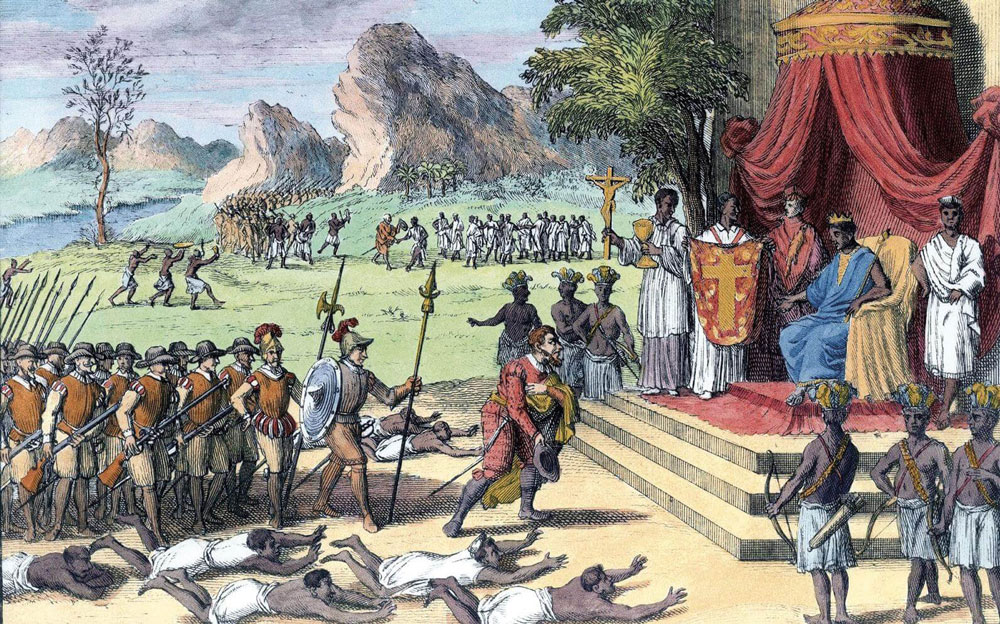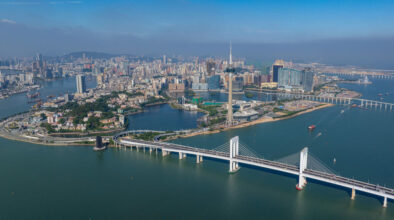As Angola looks to capitalise on its tourism potential, the country’s first and only World Heritage site is taking the stage. This ruined capital of the former kingdom, Mbanza Kongo, lies near the country’s northern border, about 200 kilometres from the Atlantic coast. Earlier this year, Angola’s government pledged to invest significant amounts of money into uncovering, protecting and managing what remains of the city, including remnants of one of sub-Saharan Africa’s oldest cathedrals.
Historians and anthropologists consider the Kingdom of Kongo one of the most important former civilizations in Southern Africa. The vast realm was established in the late 14th century and lasted into the 1900s. At its height, the kingdom stretched from what is now Gabon, down through the Republic of Congo and the Democratic Republic of Congo and into northern Angola.

The Portuguese explorer Diogo Cão was the first European to set foot in the region and his 1482 arrival dramatically changed the course of Kongo’s history. By the end of that century, the kingdom’s ruling monarch Nzinga a Nkuwu had converted to Catholicism and been baptised João I (a nod to Portugal’s king at the time). While the Kongo’s João later reverted to his traditional spiritual beliefs, his highly devout son and successor, Afonso Mvemba a Nzinga, made Christianity the kingdom’s official religion.
Built on a plateau, Mbanza Kongo was centred around a royal residence and cemetery, a customary court and a sacred tree that dominated the kingdom’s spirituality. After the Portuguese arrival, European-style buildings and churches were added to its expanding urban area.
According to UNESCO, “Mbanza Kongo illustrates, more than anywhere in sub-Saharan Africa, the profound changes caused by the introduction of Christianity and the arrival of the Portuguese into Central Africa.” Traces of traditional Kongolese culture can be found in Angola, the Democratic Republic of Congo and the Republic of Congo.
Mbanza Kongo today

Visitors wandering around the Mbanza Kongo heritage site today can glean insights into the fallen kingdom through architectural remnants and reconstructions. Highlights include the foundations of the royal residence – its layout revealed through archaeological excavations – and the Nkulumbimbi Shrine, a large rock engraved with symbols. The shrine has been referred to as “the mysterious site where the light will shine from to illuminate the world” and compared with the Tower of Babylon. A dozen churches, convents, schools, palaces and residences are also understood to have once occupied the area, and excavations to uncover further physical evidence of how the kingdom’s subjects lived are ongoing.
Mbanza Kongo is – architecturally speaking – best known for the ruins of its centuries-old Portuguese cathedral. The Cathedral of the Holy Saviour of Congo’s adobe and stone walls, which fuses indigenous African and European architectural styles, have survived centuries of modification, conflict and ultimately abandonment. With its original structure built more than 500 years ago, the cathedral is believed to be one of the oldest places of Christian worship in sub-Saharan Africa outside of Ethiopia.
While other parts of the former kingdom took on the name ‘Congo’, modern-day Mbanza Kongo, capital of northern Zaire Province, retains its pre-colonial spelling. The city of around 200,000 people boasts a respected museum dedicated to the kingdom’s monarchs that houses cultural artefacts and royal portraits. Today’s Mbanza Kongo is an important market for regional produce, including corn, almonds and cassava.
Mbanza Kongo’s return to the forefront

Angola, home to 35 million people, emerged from decades of civil war in 2002. Since then, its economy has largely been running off oil and diamonds. In 2005, a mere 200,000 tourists visited Angola. That number reached a peak of 650,000 in 2013 and has been in decline until now.
But Angola’s government hopes tourism will play a bigger role in its future. As it works to kick-start the fledgling industry, officials are eyeing up Mbanza Kongo as a potential drawcard for visitors – a cultural accompaniment to the country’s wildlife and wilderness areas.
Mbanza Kongo was inscribed on the UNESCO World Heritage List in 2017. This January, President João Lourenço approved an agreement worth around US$120 million for the restoration and conservation of the heritage site, which is legally protected by Angola’s 2010 constitution. That government funding will help bring Mbanza Kongo’s management up to speed with UNESCO recommendations and promote cultural tourism.
There’s also a major infrastructural development on the horizon: a new airport in the town of Nkiende II, just 34 kilometres away from Mbanza Kongo. In March, the government announced that this Chinese-built project would be up and running in 2025. Easy airport access could significantly boost the number of visitors to Mbanza Kongo.
UNESCO describes the Kingdom of Kongo’s capital as an “eminent place of remembrance” for the former civilisation. “In its built structure and archaeological vestiges, the town retains the traces of its customary, colonial and religious past,” the United Nations agency explains in Mbanza Kongo’s heritage listing. “It is quite remarkable that the passing of centuries has not led to any encroachment on the royal space, which is still clearly identifiable as the spiritual centre of the community.”
UNESCO also described the kingdom’s contributions to Africa as “attested and undeniable” – particularly with regard to Mbanza Kongo’s role as a gateway that enabled the Christian world to enter the continent.
Known worldwide for its diamonds and gems, Angola may soon be profiting from another type of stone: that which was used to build Mbanza Kongo, the once-glorious capital of its fallen kingdom.



